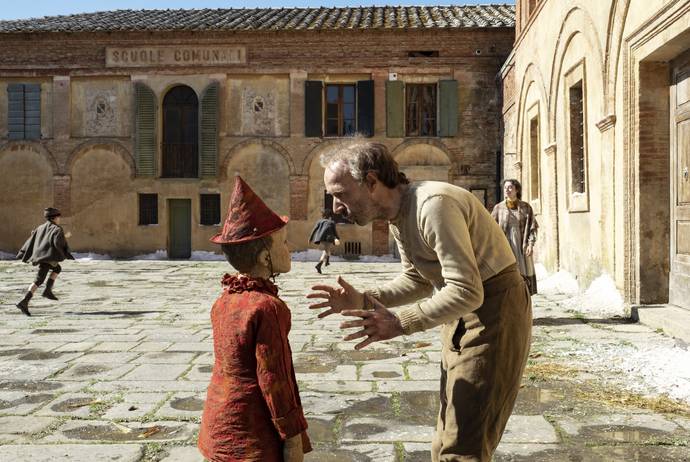“As a director, it was hard to resist the temptation to bring the story of the little wooden boy to the screen - Matteo Garrone explains - and I hope that audiences will confirm that I was right to pursue this dream.”
After The Tale of Tales, comes another film by the Roman director for whom fables evoke the essence of modernity. The wood from which Pinocchio is cut, is humanity,” as Benedetto Croce said.
Collodi’s wooden doll is a little rascal, an eternal runaway, an adventurer who just keeps making mistakes. His tale is lucid, simple, timeless. It follows the path - made of rises and falls, pain and betrayals - of a boy, a puppet, a victim of events in search of his humanity.
“I started from the origins - the director continues - from the drawings of Enrico Mazzanti, the first illustrator. I was influenced by the paintings of the Macchiaioli, by the simple way in which color captures nature light, shadows, tones. And then by Luigi Comencini’s Pinocchio, which inspired me with its sense of poverty. But there are also some aspects of Tim Burton, a director whom I deeply admire.”
The fantastical atmospheres make the film lighter. There is no heavy moral lesson and it keeps us from becoming weary of a world increasingly filled with cats and foxes, ready to trick and tempt us with promises of illicit and relatively easy enrichment, or to take refuge in the Land of Toys, where idleness and leisure reign, ultimately revealing the beasts in us.
“I tried to get people to rediscover a classic,” Garrone continues. “It’s our story, and we encounter it every day, with all its metaphors, allegories, and suggestions. It contains all the life lessons we could imagine.”
A tale that transcends generations and preserves its appeal throughout the ages, as Roberto Benigni believes. “Pinocchio is not just a fairytale, it’s a divinatory book. This film contains the beautiful story of a father’s love for his son. Geppetto is a present father, a role model, a poor man who sees poverty as fortune.”
Rotating around Pinocchio’s adventures are a series of animals that are not only anthropomorphic symbols of human vices and virtues, but also true to their animal nature. Garrone embues them with opportune symbolic solutions, so that each character in the film matters.
Pinocchio resonates with people thanks to the sincere passion for the story it tells, and especially for what it implies. If evil lies in a system that starves people and keeps them in ignorance, Garrone - like Collodi - believes in the value of good, because even though we may lose hope in the stomach of the whale, we have the resources to be born again.



































